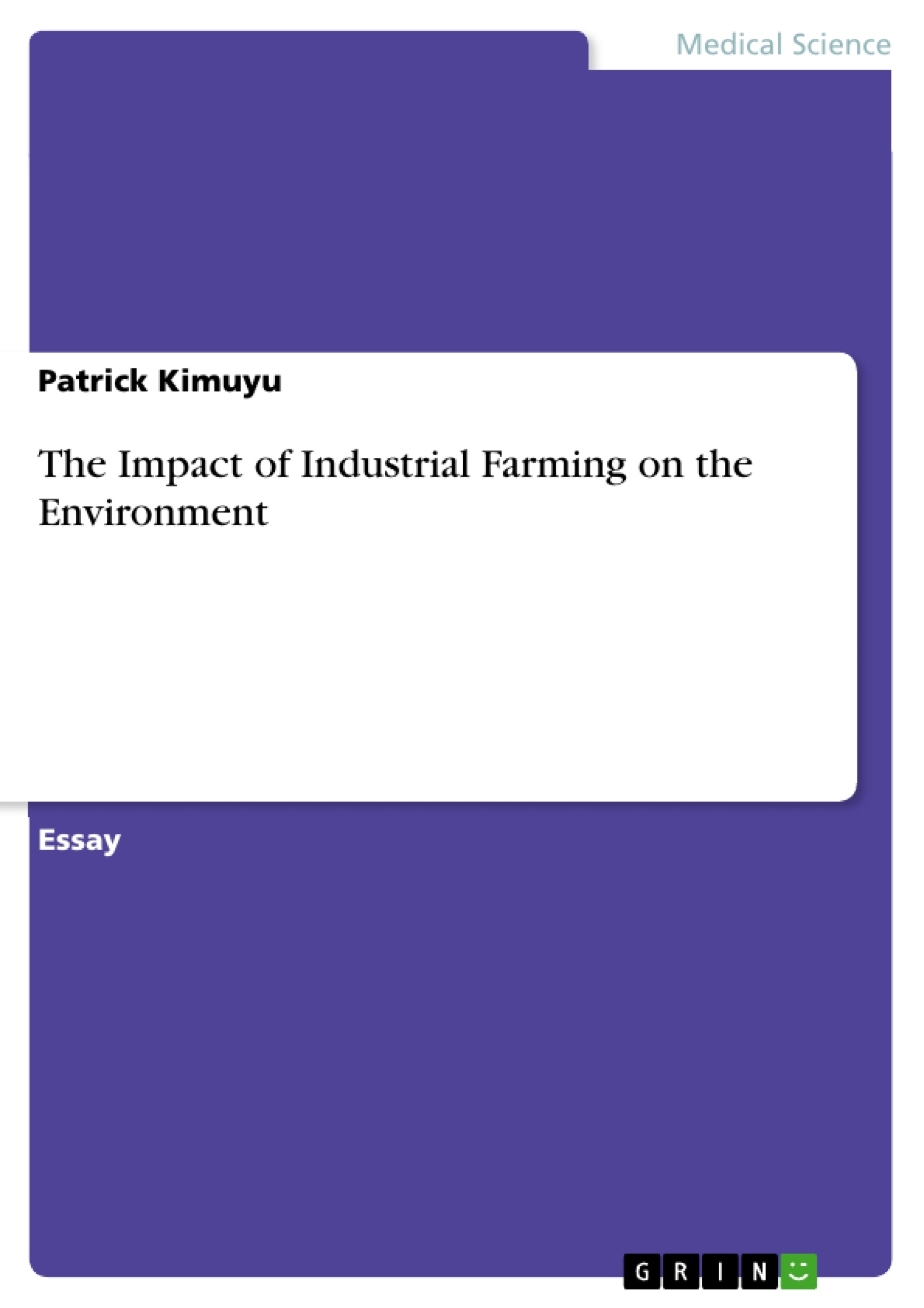Agricultural production has over the years transformed from subsistence farming to more intensive commercial farming. It is apparent that industrial agriculture has been epitomized as an important way of promoting farming efficiency, as well as increasing agricultural production. This has led to increased food sustainability in developed countries. It has also played a significant role in addressing food shortages in developing countries. Although industrial farming has helped to feed more people around the world, it has brought harm to both people and the planet as a whole.
Thankfully, biotechnology has begun to make industrial farming more environmentally friendly, and as a nation we need to more fully embrace the revolution it is bringing to agriculture. It is apparent that industrial farming has immense consequences on the environment ranging from environmental pollution to the phenomenon of climate change. Therefore, this paper will provide an aesthetic analysis of the harmful impact of industrial farming on the environment.
Table of Contents
- Introduction
- Impact of Industrial Farming on the Environment
- Environmental pollution by fertilizers
- Environmental Contamination by Genetically Modified Seeds
- Unhealthy Population
- Ecological Imbalance
- Climate Change
Objectives and Key Themes
This paper examines the negative environmental impacts of industrial farming practices. It aims to highlight the significant consequences of intensive agricultural methods on the environment, public health, and ecological balance.
- Environmental pollution from fertilizers, pesticides, and genetically modified seeds
- Public health concerns related to antimicrobial resistance, zoonotic diseases, and foodborne infections
- Ecological imbalances caused by intensive livestock production and land use changes
- The impact of industrial farming on water resources and biodiversity
- The role of biotechnology in mitigating the negative consequences of industrial agriculture.
Chapter Summaries
The introduction provides an overview of the shift from subsistence farming to industrial agriculture, emphasizing its role in increasing food production while also acknowledging its negative environmental impacts. The paper then delves into the specific impacts of industrial farming, starting with the environmental pollution caused by fertilizers.
The chapter on environmental pollution by fertilizers discusses the excessive use of inorganic fertilizers and their contribution to water pollution, eutrophication, and the increased susceptibility of crops to pests and diseases. The chapter on environmental contamination by genetically modified seeds explores the potential risks associated with genetically modified crops, highlighting the potential for environmental harm, such as the destruction of monarch butterflies.
The chapter on unhealthy population examines the public health concerns associated with industrial farming, including antimicrobial resistance, zoonotic diseases, and foodborne infections. It also discusses the potential impacts on occupational health, particularly for farm workers exposed to toxic gases and dust.
Keywords
The paper focuses on industrial farming, environmental pollution, public health, ecological balance, fertilizers, pesticides, genetically modified seeds, antimicrobial resistance, zoonotic diseases, foodborne infections, and biotechnology.
- Citar trabajo
- Patrick Kimuyu (Autor), 2018, The Impact of Industrial Farming on the Environment, Múnich, GRIN Verlag, https://www.grin.com/document/432523



